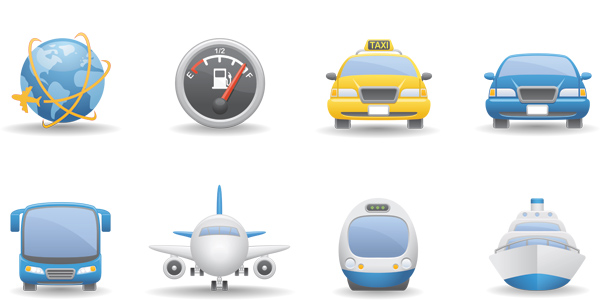story bysamantha wittchenWith the holiday season rapidly approaching, Americans will take to the roads, rails and air in droves. The average holiday traveler’s trip is 275 miles during December, and the number of long-distance trips taken during the Christmas/New Year’s holiday increases by 23 percent, and 91 percent are made by personal vehicles. The remaining holiday travelers are split between air travel (five to six percent) and bus, train, ship or other modes (two to three percent). That’s a whole lot of car travel, which emits carbon dioxide while consuming fuel.
Although it’s estimated that air travel only contributes to three percent of man-made carbon dioxide emissions, the amount of petroleum-based fuel burned by U.S. airlines in 2010 was a little more than 11 trillion gallons. It’s estimated that air and car travel use equivalent amounts of energy to transport one passenger one mile.
So, what are you supposed to do when your mother-in-law will be furious if she doesn’t get to see her grandkids because you’re trying to be greener?
Obviously, forgoing holiday travel just isn’t an option for most of us, but there are ways to make your trip less energy-intensive. Here are some tips.
1. Try to choose a central location for holiday gatherings. Every gallon of gas burned produces 20 pounds of carbon dioxide, so choose a location closest to most of the people involved and reduce the total fuel consumption and carbon emissions.
2. Consider taking the train or bus. Both carry exponentially more people in one trip than a car can, lowering an individual passenger’s energy and carbon footprint. Amtrak reports that carbon emissions of traveling by rail are 0.21kg per passenger mile, compared with 0.48kg per passenger mile when traveling by plane. Plus, if the weather’s bad, you have the added benefit of being able to sit back and relax while someone else gets you to your destination.
3. Ride with a buddy. Carpooling reduces the amount of fuel used and emissions produced by each passenger. And if you happen to go a little heavy on the eggnog, you’ll have a back-up driver.
4. If you must get on a plane, try to take a direct flight, and choose airlines that use newer-model planes, as older planes tend to have lower fuel economy than newer ones.
5. Pack light. However you’re traveling, every extra pound of weight increases the amount of fuel used, so reducing your luggage weight reduces your environmental impact.




Americans always love to go on holidays and picnics and generally them to be in a good automobile like planes, trucks, and cars. But before that we need to plan out many things like where we need to travel and which place we would stay. Choosing of the places is highly important and should always pack light tiffin for traveling.
Americans always love to go on holidays and picnics and generally them to be in a good automobile like planes, trucks, and cars. But before that we need to plan out many things like where we need to travel and which place we would stay. Choosing of the places is highly important and should always pack light tiffin for traveling.